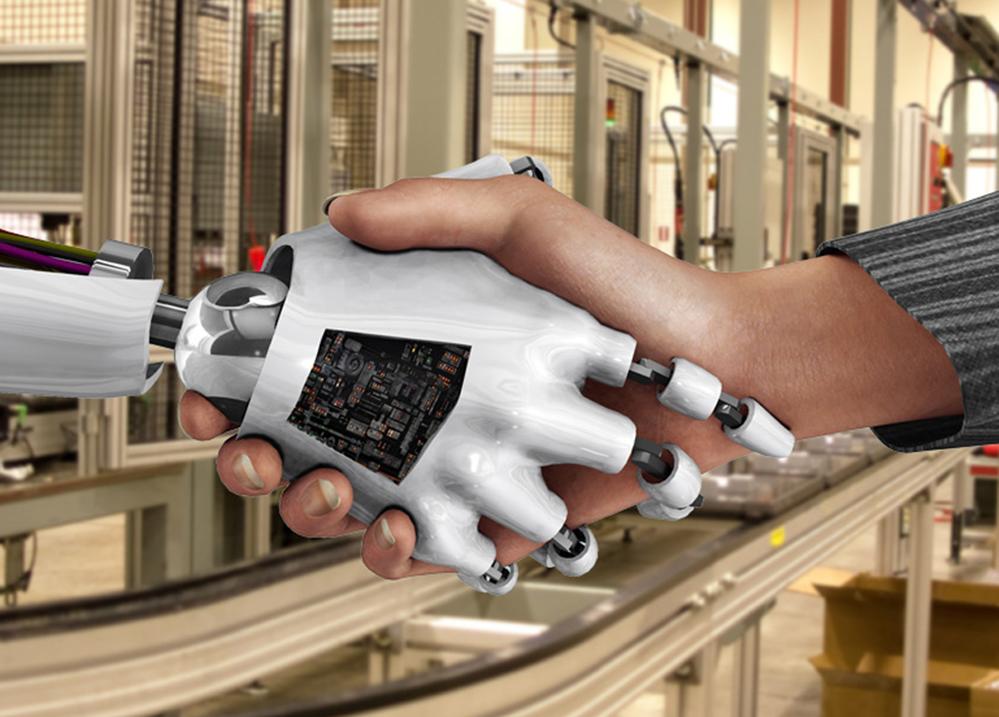CV-1984 is accelerating the spread of Orwellian surveillance devices like talking drones, facial recognition cameras, and more; but that’s not the only technology that is advancing – robots or automated machines are also speeding up their deployment to combat the spread of the coronavirus.
This reporter and Activist Post has consistently stated that robots were coming for our jobs; and now as record unemployment numbers strike in the U.S., automated machines are being rolled out as well to replace even more workers.
ZeroHedge reports:
Bloomberg Law reports JBS SA, the world’s largest meat producer, is preparing to install robots in slaughterhouses to mitigate the spread of COVID-19 among human employees working on the production line.
JBS SA CFO Guilherme Cavalcanti recently said the Brazilian processing company expects to expand automation at its facilities across the world.
Cavalcanti said the adoption of automation started before the pandemic as labor tightened at US plants due to a decline in immigration sparked by the Trump administration. He said labor shortages have developed in the US as the virus infects workers and shutters plants.”
Here’s a video of those meat packaging machines in action.
It’s not just meat packaging that could be threatened by robots; grocers themselves are also in danger of being replaced by machines. CNN reports that grocers – big and small chains alike – are turning to robots for performing various tasks like cleaning floors, stocking shelves and delivering groceries to shoppers. The covid crisis could even prompt online retail warehouses like Amazon to invest more into automation technology as well.
The New York Times reported that the outbreak is boosting demand for Zhen Robotics and its RoboPony, a self-driving cart that is sold to retailers, hospitals, malls and apartment complexes.
A group of scientists on the editorial board of Science Robotics are further calling for robots to do the “dull, dirty, and dangerous jobs” of infectious disease management by replacing certain hospital jobs like disinfecting robots combing rooms/floors and working in labs.
A recent report by A3, Association For Advancing Automation, further details all the ways that artificial intelligence and automation is being used in different industries to combat the coronavirus.
This all continues to highlight what Activist Post and this writer has detailed consistently for months — that advancement in robotics and A.I. is taking jobs daily more and more, warning that robots would soon take human jobs such as construction and farming robots, Angus and HRP-5P, being created to replace workers in the aforementioned industries. Activist Post has been sounding the alarm of the coming robot apocalypse.
Also see the article entitled: “Robots Already Replacing Bank Tellers, Drivers, News Anchors, Restaurant and Warehouse Employees. Will Your Job Be Next?” written by B.N. Frank.
As this writer has written previously on Steemit, we are shifting towards a working world with little or no humans, as automation and artificial intelligence begins to take over our jobs. It’s cheaper to hire a few robots which don’t need rest and benefits than to hire a few humans who need healthcare and retirement funds.
Last year, robots took a record number of jobs in the U.S. according to Robotic Industries Association (RIA) as Activist Post reported. Now, with the impetus of the coronavirus the number of jobs occupied by robots could multiply quite rapidly. Oxford Economics also published its own report warning that accelerating technological advances in automation, engineering, energy storage, artificial intelligence, and machine learning have the potential to reshape the world in 2020 through 2030s, displacing at least 20 million workers.
Brave – The Browser Built for Privacy
With the coronavirus as a catalyst to speed up the deployment of automated machines, we can probably safely say that number will be much more severe. It seems I am not the only one to share that opinion; a recent MarketWatch article written by Johannes Moenius, a professor of global business and the director of the Institute for Spatial Economic Analysis at the University of Redlands, agrees with this author’s conclusion stating “at least 50 million jobs could be automated in just essential industries.”
In fact, the Brookings Institution said in a report last month that “any coronavirus-related recession is likely to bring about a spike in labor-replacing automation … Automation happens in bursts, concentrated especially in bad times such as in the wake of economic shocks, when humans become relatively more expensive as firms’ revenues rapidly decline.”
